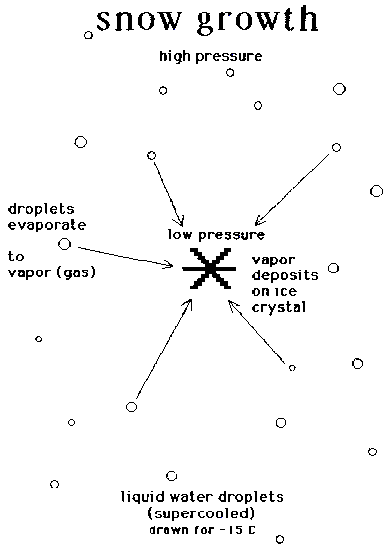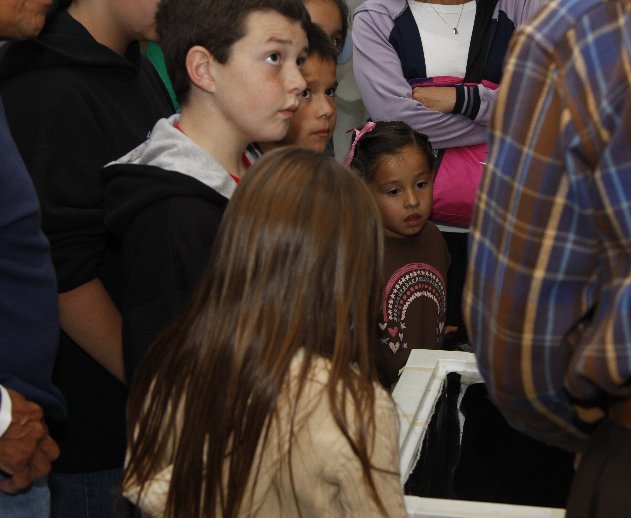
Next there is a process that happens rapidly, so I'll describe it in advance. [The illustration is shown with an overhead or computer projector.] Let these small circles represent supercooled water droplets. Once we have an ice particle started then it will grow without touching the water droplets. When a cloud droplet gets close to an ice particle, it will annihilate itself; it will vaporize into an invisible gas. That gas, or vapor, then moves over to the ice particle and condenses on it, making it bigger. The ice grows at the expense of the nearby water droplets. [The cause is a vapor pressure difference. The water is at high vapor pressure and the ice is at low vapor pressure. Gas likes to move from high to low pressure.]

You will actually see this happen. Once I get the snow started in the freezer, then I will blow in more cloud to feed the crystals and make them grow larger. The snow crystals will eat up my fresh cloud in about 2 seconds! After several feedings the crystals will become obviously bigger.

We will now move to the freezer. [Select a group of students,
preferably of good behavior, and possibly some of the adults, up to about nine
total at a time. The rest of the class can watch the TV monitor for a close-up
view.] We need to follow a couple of rules.
Rule #1: Short people in front!
Rule #2: Step back from the freezer about a foot. [They
only need to see the top of the cloud, not the bottom. By stepping back, the
people behind them get a better view. There is otherwise no effect on the
experiment.]
[There are some additional "rules", depending on the situation. The viewers should not blow into the freezer unless directed. If there is more than one person blowing in, the cold air tends to get blown out. There could be chaotic blowings which may ruin the beauty of the first minute of the snowstorm. However, older students can do a good job of initiating the cloud and feeding the crystals.]
[Once the snowstorm gets going, it is typical for students to want to try to feel the crystals. Hands are not sensitive enough to do so. One only feels the cold. You might have one girl try it and report to the rest of the class. Then let no one else put their hands in the freezer. Once I had a group of boys push and shove each other to get their hands in, knocking over my microscope light and the video camera in the process. That could ruin it for everyone.]
Back, Next
Home,
sequence,
equipment,
clouds,
snowstorm,
crystal growth,
cloud seeding history,
related topics,
water optics,
ice optics,
trouble shooting